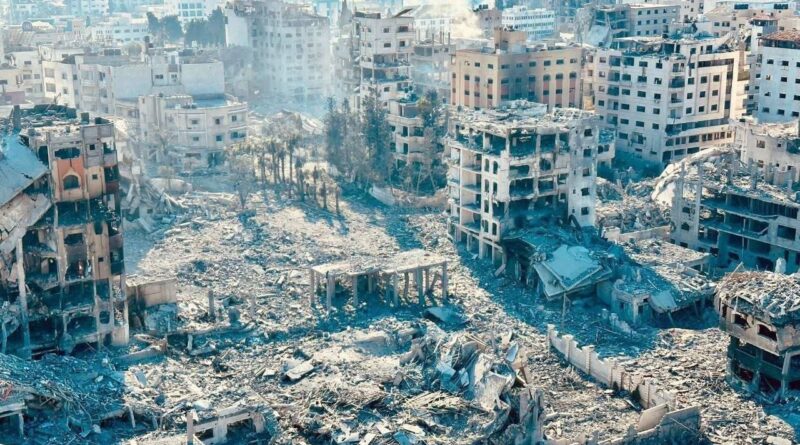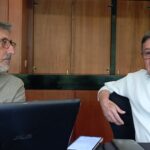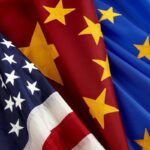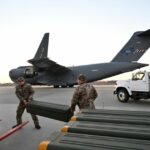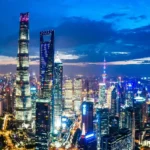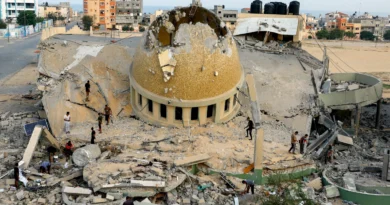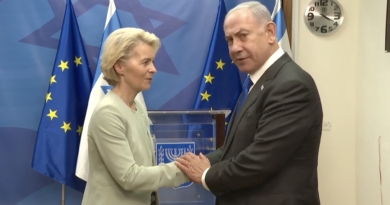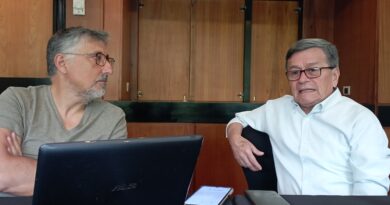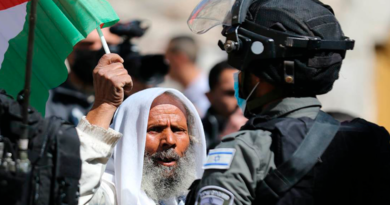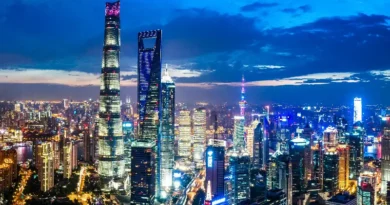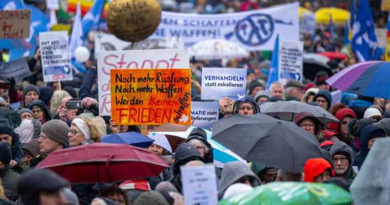Who decides who is a terrorist?
PASCUAL SERRANO
After the attack by Hamas on Israel, the hackneyed concept of terrorism has returned to the present, with which it is intended, through this accusation, to disavow some and, throughe the fight against it, legitimize the actions of others.
It is assumed that, at least the press and journalists, should use language in a neutral way, not conditioned by the bias of certain political powers. Let's see what the dictionaries say. According to the RAE, terrorism is “Domination by terror” or “Itstransfer of acts of violence carried out to instill terror.” It is evident that under this consideration we could include many issues that the media never think of calling terrorism.
Let's continue searching, now in the Pan-Hispanic Dictionary of Legal Spanish, prepared by institutions such as the Royal Academy of the Spanish Language, the Ibero-American Judicial Summit and the Association of Academies of the Spanish Language. Here the least self-referential term is “terrorist act”. And it says that it is the “act that aims to cause death or physical and/or mental injury against any person, or when the purpose, due to its nature or context, is to intimidate a population or force a Government or an international organization to perform an act or to refrain from doing so.” We find ourselves in the same situation, there are numerous circumstances that meet this characteristic.
Let's see what the UN says. Here we find that “Terrorism involves the intimidation or coercion of populations or governments through threat or violence.”
We remain the same, in fact, if we were to think about what has been the greatest violent act directed against the civilian population with the objective of causing death or physical harm, and carried out to force a government to make a decision, it is evident that it would be the launching of atomic bombs in Hiroshima and Nagasaki. And if, as the Panhypanic Dictionary of Legal Spanish says, a terrorist is “whoever commits or attempts to commit terrorist acts by any means, directly or indirectly and deliberately,” then it seems clear that the greatest terrorist in history is the United States government. United States and its Army causing millions of civilian deaths with those atomic bombs designed to pressure the Japanese government to surrender.
The conclusion we are reaching is that being considered a terrorist is only the subject of a political decision. Therefore, for Western political discourse, its leaders and its media, it is indisputable that Hamas is a terrorist group. But Hamas is a terrorist for the United States and the European Union because it is included in the list of terrorist organizations that they themselves have drawn up. It doesn't seem like a very overwhelming argument. It would be like arguing that the football association in the next town is terrorist because in my house we have included it on the list of terrorists.
So we are operating with the consideration of terrorism and terrorists simply with the list that the North American State Department or the European Union has prepared, which, apparently, makes any test or trial unnecessary.
History has shown the contradictions of the classification of terrorists by those in power.
Fifty years ago, Nelson Mandela was imprisoned for terrorism and was considered a “terrorist” by the United States government, only to end up as president of South Africa and honored by the entire international community on the day of his death.
The mujahideen guerrillas in Afghanistan, among whose ranks was Osama Bin Laden, were described as “freedom fighter heroes” for their work in the war against the Soviet Union. In 1985, then-President Ronald Reagan invited mujahideen leaders, sponsored and financed by the Central Intelligence Agency, to the White House. The president stated that “the Afghan mujahideen are the moral equivalent of the heroes of the United States.” Once the USSR disappeared, there were no more of these “liberators” and they became “terrorists.”
The problem is that, according to the renowned intellectual Eqbal Ahmad, “yesterday's terrorist is today's hero, and yesterday's hero becomes today's terrorist.” But, furthermore, the power of the adjective almost always corresponds to the almighty, who demonize or sanctify at their whim, depending on whether one is at their service or not.
Let's look at another case of an organization that goes from being terrorist to ceasing to be terrorist based on interests. Is he East Turkestan Islamic Movement (ETYM for its acronym in English), an Islamic jihadist organization created in Western China who fights against the Chinese government. Tras that attacks of September 11, 2001, was considered a terrorist organization by the United States, the European Union, the United Nations and, of course, China, due to its alleged links to Al Qaeda. In the previous ten years there had committed more than 200 terrorist acts, resulting in at least 162 deaths and more than 440 injuries
However, over the course of the next 20 years, Washington's foreign policy priorities have changed dramatically, and the idea of a violent group harassing and advocating secession in China is very appealing to the United States. QFew days after the 2020 US presidential election, The Trump administration removed ETIM from the Terrorist Exclusion List, citing an alleged lack of activity even as its Islamist fighters set up camp in Afghanistan and Syria. The Biden administration continued to support that position. The ETIM is no longer terrorist for them, despite the fact that it has caused around a thousand deaths in China since the beginning of its activity and in 2023 it launched a car bomb against a group of Chinese teachers in Pakistan.
In the XNUMXs, the Jewish underground forces in Palestine were considered a “terrorist” organization, and rewards of one hundred thousand pounds sterling were offered for the capture of Menachem Begin, a man who later became the elected prime minister of Israel.
Years later, when the powerful created the State of Israel, the terrorists became the Palestinians, especially the PLO. However, when the Palestinian-Israeli dialogues began, PLO leader Yasser Arafat went from being a terrorist to being the international leader most frequently received by President Bill Clinton.
Let's continue with the historical curiosities. George Washington and his troops were considered “terrorists” by the British Empire. Similar qualification to the one they had for Gandhi.
Likewise, the one who would be elected president of East Timor, Xanana Gusmao, was until then a separatist terrorist in the eyes of the Western powers friendly to the Indonesian dictator Suharto, who had invaded Timor.
With the perspective of time, no one today will doubt the terrorist nature of US-sponsored dictatorships, such as those of Somoza or Batista. Something similar happens with some leaders who easily pass, in the eyes of the State Department, from terrorists to freedom fighters. This is the case of the Nicaraguan Edén Pastora who went from a Sandinista terrorist to a hero of the anti-Sandinista contras. Let us remember that in his "terrorist" era he fought against the Somoza dictatorship and in his "heroic" phase in the "contra" he fought against the legitimate Sandinista government that had won a general election.
The case of Bin Laden has already been repeated in the history of friendships/enmities of the United States secret services. Several of its “freedom fighters”, such as Saddam Hussein during the Iraq-Iran war, Noriega in Panama or Montesinos in Peru, went on to become persecuted terrorists without changing their ideology one bit.
And if we analyze the list of terrorist organizations, according to the criteria of the North American Department of State, we observe how the Irish IRA was not considered terrorist in its times of greatest violent activity, but the Revolutionary Armed Forces of Colombia (FARC), whose representatives today They are MPs, just like those of the IRA.
While the National Liberation Army of Colombia (ELN) was considered terrorist, the countrymen of the founding priest of this organization, Manuel Pérez, honored him in his small hometown in Zaragoza, Alfamén, after his death from natural causes in the mountains of Colombia . He 90% of the neighbors signed a letter to give his name to one of the streets.
The last straw is that two historic terrorists ended up being Nobel Peace Prize winners without denying either their struggle or their ideology, these are Nelson Mandela and Yasir Arafat, and another, Mahatma Gandhi was nominated five times.
All this has caused some media outlets, such as the Star Tribune newspaper, to explain why they refuse to use the term terrorism in their information; This is what executive member Roger Buoen pointed out in an example of journalistic deontology that is not very generalized:
"Our job is not to evaluate the protagonists of our articles, but to describe their actions, their environments and their identities in the most complete way possible, letting readers reach their own conclusions about individuals and organizations. In the case of the term “terrorist,” other words—“armed man,” “separatist,” or “rebel,” for example—may be more precise and less subjective. That's why we tend to prefer these more specific words. “We also pay special attention to avoid using the term terrorist in articles about the Israeli-Palestinian conflict due to the emotional and heated nature of the dispute.”
And the Palestinian-Israeli case is the most paradoxical. There those who fight against terrorism are those who murder UN workers, indiscriminately bomb civilian buildings and cut off electricity and water supplies to cities. Simply put: in its “fight against terrorism,” Israel kills more children than “Palestinian terrorism” kills soldiers.
Pascual Serrano He is a journalist and writer. His last book is "Forbidden to doubt. The ten weeks in which Ukraine changed the world”

